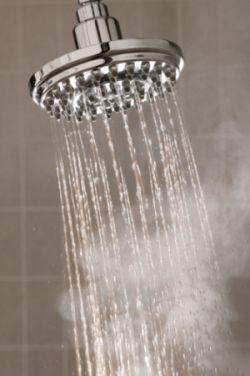
Buying a first home is an exciting time for many of us. That pride of home ownership plus the freedom of decorating however we'd like is a liberating feeling. Once you own a home, there's no more worrying about the landlord and whether you can paint that ugly pink kitchen, hang new curtains, or (gasp!) put nails in the walls.
Home ownership does come with a different set of worries, unfortunately. Unlike a rental where the landlord takes care of regular maintenance issues, keeping a house safe from hidden threats is a homeowner's responsibility. Here are just a few of the hidden threats we've uncovered in our home over the years; the list might surprise you.
1. Clogged dryer exhaust ducts. Dryer lint will catch fire very easily, which is why regular vacuuming of the dryer's exhaust system is a must. What many people aren't aware of is that dryer lint can also accumulate and possibly ignite in the exhaust ducting under the floors or behind the walls. To remove lint buildup in these ducts, a DIY dryer duct cleaning kit can help clean those hard-to-reach areas.
2. Dirty chimneys. It wasn't until our chimney flue exploded in flames that we learned how important it was to have chimneys cleaned out at least once a year. Burning wood in the fireplace releases a black, tarry substance called "creosote" which sticks to the chimney walls. If the creosote is allowed to build up, a floating ember is all it takes to set off a fire.
3. Mice droppings. If your new home is an older home or one that has been vacant for awhile, be extra careful when sweeping out piles of mice poop. Deer mice droppings can transmit the deadly disease known as Hantavirus which is breathed in along with all that stirred up dust. To avoid exposure to Hantavirus, wear latex gloves and a HEPA face mask, and wet down the floor before cleaning.
4. Water heaters. Water heaters are usually set to high temperatures so that a family can enjoy plenty of hot water. Those higher temperatures can also cause accidental burns, especially in young children. Lowering the temperature of your water heater to 120 degrees will prevent scalding burns and lower energy costs as well.
5. Lead paint. Back in the "old days", some types of household paint contained lead for extra sheen. For homeowners, sanding and scraping off this old paint can generate lots of lead-tainted dust which is both an environmental and health hazard. If your new home was built before the 1970s, check with your city's Hazardous Waste office first to learn the safe way to prep an old house for a new paint job.
6. Radon gas. One out of 15 homes in the United States has high levels of cancer causing radioactive Radon gas which originates from the uranium found naturally in the soil. Testing for Radon is something you can do with a DIY testing kit. Fixing the problem however is best left to the professionals.
7. Bad DIY wiring. When we had the wiring updated in our home several years ago, the electrician discovered that an early owner had wired the house himself, using braided cloth extension cords. Before buying an older home, a home inspection by a certified inspector will catch a so-not-to-code wiring job and other unsafe DIY improvements.
8. Carbon monoxide poisoning. Carbon monoxide is an odorless, colorless and flammable gas that is poisonous to humans and their pets. CO gas can build up from a faulty gas furnace or oven, a camp stove or even a chimney. Fixing the escape of CO gas into your home is a job for the professionals, but an easy (and cheap) DIY task for a home owner is to install CO alarms throughout the home.
9. Icicle buildup on the eaves. If you are a southerner that has recently moved to the cold north, icicle buildup is one of those hidden hazards that people don't often think about. Melting icicles can drop from the eaves and cosh anyone who happens to be standing around. To avoid injury from dropping icicles, it's best to knock these things off with a shovel first even though they look pretty cool.
10. Squirrels. Attic dwelling squirrels love to nibble away at all that yummy electrical insulation which increases the risk of home fires. To prevent squirrels from entering your attic, check the roof and eaves periodically for signs of gnawing. Open areas should be repaired with a bit of steel mesh after the squirrel has been trapped.
[Image: Thinkstock]
sources:
Propex.com
EPA: A citizen's guide to radon
CDC: What you need to know about hantaviruses
http://shine.yahoo.com/channel/life/10-hidden-hazards-in-your-home-2341861/
Tidak ada komentar:
Posting Komentar